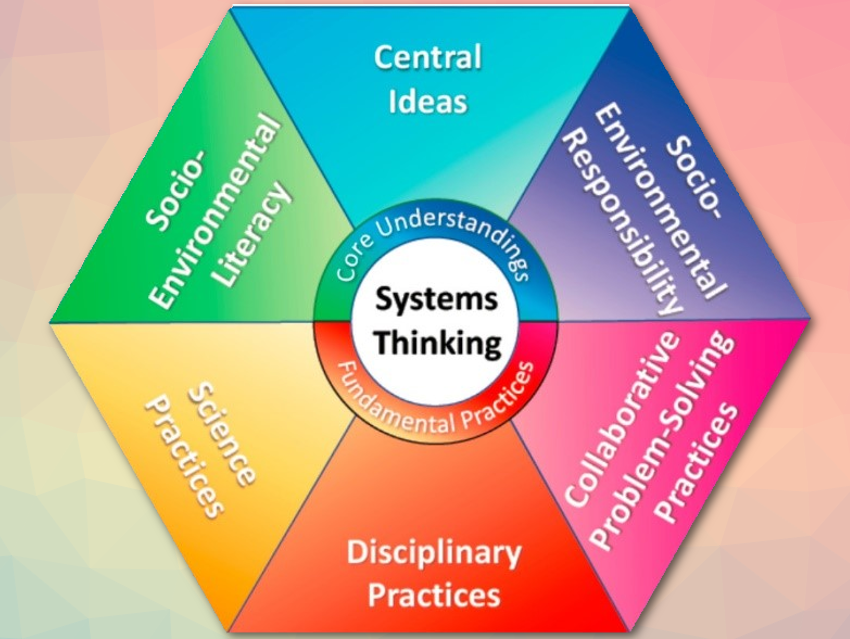Chemistry educators—Are we racing to get back to “normal” as soon as possible after the massive disruption of the pandemic? That would be quite understandable, as the COVID-19 pandemic fundamentally changed so many aspects of our lives, including the way we teach chemistry. But beyond all the pain, suffering, loss of life, and disruption we have experienced, the pandemic also offers an opportunity to reflect deeply on what we teach, and why, and how chemistry educators can help to equip students for life in a world of complexity, uncertainty, vulnerability, and very rapid change.
Hopefully, the Time is Ripe Now
This is not the first time chemistry educators have sought to reimagine how chemistry is taught. Our author team (Professors Vicente Talanquer, Robert Bucat, Roy Tasker, and myself) reports on discussions in the Journal of Chemical Education some 95 years ago, after the disruption to science, technology, engineering, and mathematics (STEM) education caused by the combined effects of the 1918 swine flu pandemic and World War I [1]. The descriptions published at that time of the state of chemistry education sound remarkably familiar. The very first volume of the Journal of Chemical Education in 1924 describes the foundational post-secondary courses in chemistry as “an encyclopedic hodge … too extensive for thorough treatment in the time usually allotted and so rich in the multiplicity of slightly related details as to bewilder the earnest student.” [2]
And does that sound like how we teach today? Students in foundational chemistry courses at the post-secondary level experience numerous isolated facts — theoretical concepts of apparently little relevance to everyday life that miss the opportunity to show the power of knowledge in chemistry to address important earth and societal challenges. We believe that the time now is ripe to imagine and realize a pathway for change.
We recommend that chemistry educators not simply return to “normal” practice, but design and implement new ways of teaching and learning based on fundamentally reimagined learning outcomes. That will equip students better for life after the rupture than our current approaches to teaching chemistry [3].
Those new learning objectives should be guided by both an analysis of existing global challenges and the types of understanding and practices needed to tackle them. Research-based frameworks are also needed to give insights into underemphasized areas of knowledge, skill, and attitude development. The ultimate goal is to develop the socio-environmental responsibility of students to help them make informed and responsible decisions as scientists and citizens, even when presented with incomplete information and under uncertainty [4].
How to Bring About Fundamental Change?
So how do we bring about fundamental change in the teaching of foundational post-secondary courses in chemistry? We identify a core set of competencies along three major dimensions: crosscutting reasoning, core understandings, and fundamental practices. We believe these should guide the design, implementation, and evaluation of chemistry curricula, teaching practices, and assessments. Systems thinking, an approach that moves beyond fragmented and reductionist knowledge of disciplinary content to a more integrated and holistic understanding of the field, is the underpinning form of reasoning required for students to relate their learning of chemistry to everyday life and important social and environmental challenges [5].
Our article, Lessons from a Pandemic: Educating for Complexity, Change, Uncertainty, Vulnerability, and Resilience [1], builds on and extends outcomes of the global IUPAC Systems Thinking in Chemistry Education project, which has the goal of infusing systems thinking and sustainability considerations into foundational courses in chemistry [6]. Detailed considerations on the key elements of systems thinking in chemistry education [7] and examples of how to integrate into teaching and learning [8] are available.
The pandemic, we conclude, has tested our resilience as chemistry educators. Our emergence from the pandemic will test our imagination.
References
[1] V. Talanquer, B. Bucat, R. Tasker, P. G. Mahaffy, Lessons from a Pandemic: Educating for Complexity, Change, Uncertainty, Vulnerability and Resilience, J. Chem. Educ. 2020. https://doi.org/10.1021/acs.jchemed.0c00627
[2] J. Cornog, J. C. Colbert, What we teach our freshmen in chemistry, J. Chem. Educ. 1924, 1(1), 5– 8. https://doi.org/10.1021/ed001p5
[3] P. G. Mahaffy, S. A. Matlin, T. A. Holme, J. MacKellar, Systems Thinking for Education about the Molecular Basis of Sustainability, Nat. Sustain. 2019, 2, 362– 370. https://doi.org/10.1038/s41893-019-0285-3
[4] J. Sjostrom, V. Talanquer, Eco-Reflexive Chemical Thinking and Action, Curr. Opin. Green Sustain. Chem. 2018, 13, 16– 20. https://doi.org/10.1016/j.cogsc.2018.02.012
[5] M. K. Orgill, S. York, J. Mackellar, An introduction to systems thinking for the chemistry education community, J. Chem. Educ. 2019, 96, 2720. https://doi.org/10.1021/acs.jchemed.9b00169
[6] P. G. Mahaffy, A. Krief, H. Hopf, G. Mehta, S. A. Matlin, Reorienting chemistry education through systems thinking, Nature Reviews Chemistry 2018, 2, 1–3. https://doi.org/10.1038/s41570-018-0126
[7] S. York, M. Orgill, Chemist Table: A Tool for Designing or Modifying Instruction for a Systems Thinking Approach in Chemistry Education, J. Chem. Educ. 2020. https://doi.org/10.1021/acs.jchemed.0c00382
[8] P. G. Mahaffy, S. A. Matlin, J. M. Whalen, T. A. Holme, Integrating the Molecular Basis of Sustainability into General Chemistry through Systems Thinking, J. Chem. Educ. 2019, 96(12), 2730–2741. https://doi.org/10.1021/acs.jchemed.9b00390
Peter G. Mahaffy received his Ph.D. in physical organic chemistry from Indiana University, USA, in 1979. Currently, he is a Professor of Chemistry at the King’s University in Edmonton and Director of the King’s Centre for Visualization in Science (https://www.kcvs.ca), which provides interactive digital learning resources used by over 500,000 students, educators and the public from over 100 countries each year.
Peter Mahaffy is a 3M National Teaching Fellow and has, among many other awards, received the College Chemistry Canada C3 Award in Chemical Education in 2019. Mahaffy is a past chair of the International Union of Pure & Applied Chemistry’s (IUPAC) Committee on Chemistry Education (CCE), a charter member of the International Council of Science (ICSU) Committee on Freedom and Responsibility in the Conduct of Science and the temporary working group on education and outreach for the Organization for the Prohibition of Chemical Weapons (OPCW). He served on the American Chemical Society (ACS) presidential working group to help professional chemists communicate climate science to the public.
Peter Mahaffy’s current research and professional work are at the interfaces of systems thinking in chemistry education, the uses of interactive visualizations to facilitate the learning of science, sustainability/green chemistry, and the responsible uses of chemistry. With Stephen Matlin, he recently co-chaired the IUPAC task force on Systems Thinking in Chemistry Education.





